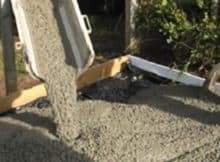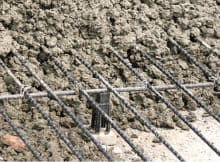Common Concrete Problems And Their Prevention:
There are many problems we might be facing during and after concreting. To produce high quality concrete we must take some precautions to avoid those common problems during concreting. In this article, we will discuss common concrete problems and how to prevent them.
1. Bleeding:
Bleeding refers to as a tendency of water to appear on the top surface of concrete after finishing. Due to bleeding some measure of water (with sand particles and other cementing materials) appears at the surface of the concrete.
Following precautions should be taken to reduce bleeding in concrete.
1. Design the mix appropriately.
2. Include least water content in the mix.
3. Use greater amount of cement content.
4. Use greater amount of fine particles.
5. Utilize a little measure of air entraining admixture.
2. Segregation:
Segregation means separation of coarse aggregates from the concrete surface due to poor compaction. It is generally seen in the plastic stage of concrete. As a result honeycomb, laitance, scaling, porous layer, bond failure etc. can be formed in concrete. Following precautions should be adopted to prevent segregation in concrete.
1. Design the mix appropriately.
2. Never use excessive water content.
3. Take care of handling, placing, and proper compaction of concrete.
4. Do not allow the concrete to be dropped from more heights.
5. Use air entraining admixture.
6. Keep the formwork to be watertight.
3. Laitance:
The appearance of cement-sand particles on the surface of freshly placed concrete is known as laitance. It is mainly occurred due to the bad effect of bleeding and segregation of concrete. The bond between subsequent layers of concrete becomes weaker and as a result, laitance is developed.
Following precautions can be taken to stop the occurrence of laitance in concrete.
1. Clay, dust, silt content etc should be removed before mixing the concrete.
2. Water-cement ratio should be maintained properly.
3. Water should not be sprayed on the concrete surface during finishing work.
4. Use well graded fine aggregates in the mix.
5. Add little amount of water reducing admixture in the concrete mix.
4. Scaling:
Scaling is the physical deterioration of concrete in which the surface layer of concrete broke down, pitted or flaked away. Due to this effect concrete surface becomes worse. Scaling can be prevented by taking same precautions adopted for laitance.
5. Plastic Shrinkage Cracks:
When the evaporation rate of water mixed in the concrete is greater than the bleed water of concrete, plastic shrinkage cracks are developed on the surface of the concrete. Basically, this type of cracks occurs in very hot climate.
6. Dusting:
Dusting can be prevented by taking following precautions.
1. Maintain a suitable water/cement ratio in the concrete.
2. Utilize dust free aggregates in the mix.
3. Guarantee appropriate hydration of concrete.
4. Avoid early surface finishing of concrete.
Also Read – How To Check Sand Quality In Field
If You Liked This Article Then Please Subscribe To Our Newsletter.
Tags: Common Concrete problems




